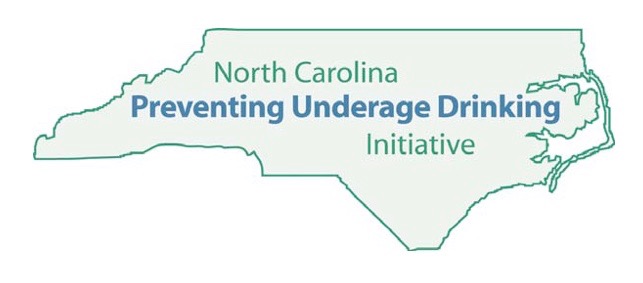The organizations below offer a wide selection of specific strategies, technical assistance and activities focused on the prevention of underage drinking.
The Center was established by the Office of Juvenile Justice and Delinquency Prevention to support its Enforcing Underage Drinking Laws (EUDL) Program. Its mission was to provide science-based, practical, and effective training and technical assistance to States and communities working to combat underage drinking through law enforcement and environmental management strategies.
- Community Assessment Tools:
- Cost of Underage Drinking in NC: OJJDP/PIRE fact sheet on the costs of underage drinking in NC.
On March 6, 2007 Acting U.S. Surgeon General Kenneth P. Moritsugu issued the Call to Action To Prevent and Reduce Underage Drinking, appealing to the Nation to do more to stop America’s 11 million current underage drinkers from using alcohol, and to keep other young people from starting.
- Copies of the Surgeon General’s Call to Action to Prevent and Reduce Underage Drinkingand other related materials are available at www.surgeongeneral.gov.
Reducing Underage Drinking: A Collective Responsibility – 2003. A joint landmark report by the National Research Council and Institute of Medicine addressing why underage alcohol use is so pervasive; explores ways different individuals and groups contribute to the problem and how they can be enlisted to prevent it.
- Click here to download the full report.
(www.camy.org): This organization monitors the marketing practices of the alcohol industry to focus attention and action on industry practices that jeopardize the health and safety of America’s youth.
(http://www.cspinet.org/alcohol/index.html) Though no longer active, the Alcohol Policies Project was established to help focus attention on policy reforms to reduce the health and social consequences of using alcohol. Until 2010, the project has worked with thousands of organizations and individuals to promote a comprehensive, prevention-oriented policy strategy to change the role of alcohol in society. Helpful archived information on alcohol and alcohol policy is still housed at their site.
(www.cadca.org): CADCA’s mission is to build and strengthen the capacity of community coalitions to create safe, healthy and drug-free communities. The organization supports its members with technical assistance and training, public policy, media strategies and marketing programs, conferences and special events.
From the CDC, CAMY and CADCA comes an excellent resource for individuals seeking information on public health approaches to preventing underage and excessive drinking. The Community Guide presents research and recommends best practice approaches on such alcohol policy issues as reducing alcohol outlet density, increasing alcohol taxes and maintaining alcohol control systems. The Community Guide offers guidelines and approaches for implementing these and other research-based practices for preventing underage drinking and excessive alcohol use in your community.
You can visit the CDC’s Community Guide at:http://www.thecommunityguide.org/alcohol/index.html
FACE was a national nonprofit for alcohol awareness providing resources, training and strategies on alcohol awareness.
The Community Alcohol Personality Survey (Face, 2004) is an easy-to-use needs assessment tool to help determine the extent of your local underage drinking problem.
The Substance Abuse and Mental Health Services Administration (SAMHSA) has established a clear vision for its work — a life in the community for everyone. To realize this vision, the Agency has sharply focused its mission on building resilience and facilitating recovery for people with or at risk for mental or substance use disorders. SAMHSA is gearing all of its resources — programs, policies and grants — toward that outcome.
Spotlight on Underage Drinking:
http://www.samhsa.gov/underage-drinking
Too Smart to Start:
An underage alcohol use prevention initiative for parents, caregivers, and their 9-to-13 year-old children.
A comprehensive portal of Federal resources for information on underage drinking and ideas for combating this issue. People interested in underage drinking prevention—including parents, educators, community-based organizations, and youth—will find a wealth of valuable information here.(www.stopalcoholabuse.gov)
View a summary of data from the latest Youth Risk Behavior Survey describing the risky behavior and problems associated with underage drinking in North Carolina.
The North Carolina Division of Public Health created this website to increase the accessibility of data that describes the impact of excessive alcohol drinking in the state. The topics covered in the dashboard include: overview of excessive alcohol use, related public health strategies, data on alcohol outlet density, alcohol consumption rates, immediate- and long-term impacts of excessive use, and cost to communities. This website also displays a cumulative data dashboard and bibliography describing sources for more information.
OJJDP/PIRE’s 78-page “how to” on conducting alcohol purchase surveys is a useful tool to assess youth access to alcohol. Download a copy of this publication: Guide to Conducting Alcohol Purchase Surveys
A SAMHSA model program, is a community organizing effort designed to change policies and practices of major community institutions in ways that reduce access to alcohol by teenagers. Click here for a brief summary of the program: http://www.nrepp.samhsa.gov/ViewIntervention.aspx?id=117
